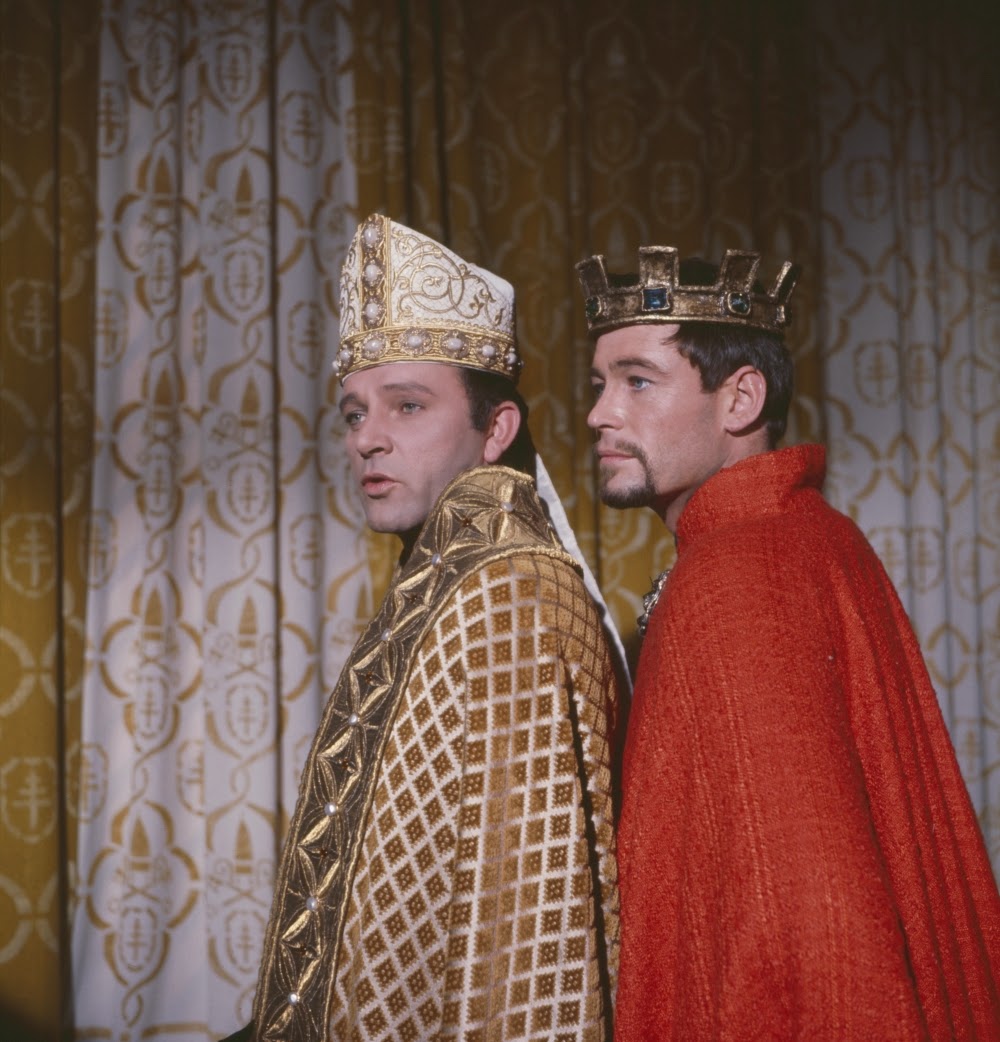In 1964, as a consequence of the deliberations of the Fathers of the Second Vatican Council, culminating in the Constitution
Sacrosanctum Concilium, changes began to be introduced into the Celebration of Mass. New liturgical books which reflected these alterations were required.
On this Blog we will be examining the various iterations of the Roman Missal which were published between 1964 and 1969. These missals are often referred to as "Interim Rite" missals. Of necessity, these posts must be confined to Anglophone Interim Rite Missals.
The first of these Missals for the English-speaking world was published by the Catholic Book Publishing Company (New York) after May 1964, for the use of the Dioceses of the United States of America. Below are photographs from that Missal.
The next post in this series will study the Canadian-Australian Altar Missal of 1964.
Please click on the images for an enlarged view.
 |
| The Missal handsomely-bound in red morocco leather and gold stamped. |
 |
| The titlepage of the 1964 Missal. |
 |
On the reverse of the titlepage, the Imprimatur of Cardinal Spellman of New York is shewn.
It also makes reference to the translation of the Scriptures which the Bishops determined for use. |
In publishing this Missal, the Bishops Conference of the United States obtained a decree from the now infamous
Consilium, signed by Cardinal Lercaro and Father Annibale Bugnini CM and dated 1st May 1964. The decree defined the specific changes to the celebration of the Mass which were permitted. The English language was permitted to be included in the following parts of the Mass (shewn in the photograph below) : the proclamation of the Epistle and Gospel; in the chants of the Ordinary of the Mass, namely the
Kyrie,
Gloria,
Credo,
Sanctus and
Agnus Dei; in the Lord's Prayer; in the formula
Ecce Agnus Dei before the Communion of the Faithful; in the chants of the Proper of the Mass, namely the
Introit,
Gradual etc.,
Offertorium and
Communio; in acclamations, Greetings and Dialogues between the celebrant and the faithful. Lastly in the "Common Prayer" or prayers of the Faithful.
 |
| First part of the decree of the "Consilium" : May 1964. |
This Missal, however, is a curiosity: it was published before the decisions regarding revisions to the rite of Mass were published at the beginning of 1965. Consequently,
ritually it contains no changes from the celebration of Mass according to the 1962 typical edition of the
Missale Romanum. All it admits of is the inclusion of the English language. It permits English for the use of the "Common Prayer" (General Intercessions), but no reference to these prayers is made in the rubrics of the Order of Mass. But one thing worthy of note : where these vernacular admissions are printed, no alternative in Latin is shewn. It seems that when the Consilium used the words in its decree " Linguam anglicanam adhibere licet ", it was more of a
requirement than a permission.
 |
The first page of the Proper of the Seasons
shewing the Introit and Epistle in English,
but the Collect still entirely in Latin. |
The next photographs are a selection of the pages of the Order of Mass.
 |
| The Prayers at the foot of the Altar : still entirely in Latin. |
 |
Pages shewing the Kyrie and Gloria, given only in English.
Compare the translation with the present translation for the Ordinary Form of the Roman Rite. |
 |
One of the prefaces :
The Preface itself and its introductory dialogue are entirely in Latin;
the Sanctus given only in English. |
 |
Pages shewing the Communion Rite :
The Lord's Prayer and Agnus Dei given in English,
everything else in Latin. |
 |
The concluding prayers of the Mass remain unaltered
from the 1962 edition of the Missale Romanum and all its predecessors. |
 |
Pages shewing the Rite of Burial, including English for chants and orations,
but the antiphon remaining in Latin with its gregorian notation. |






















































